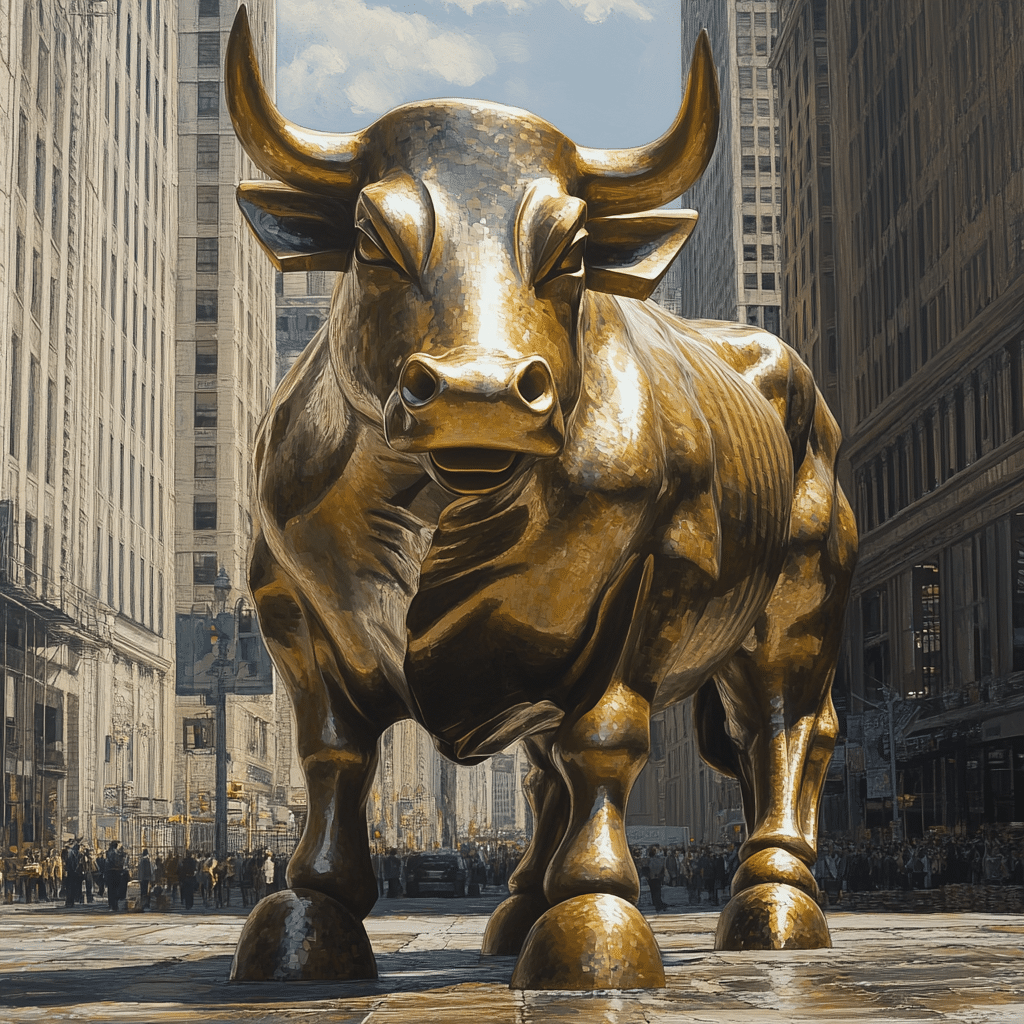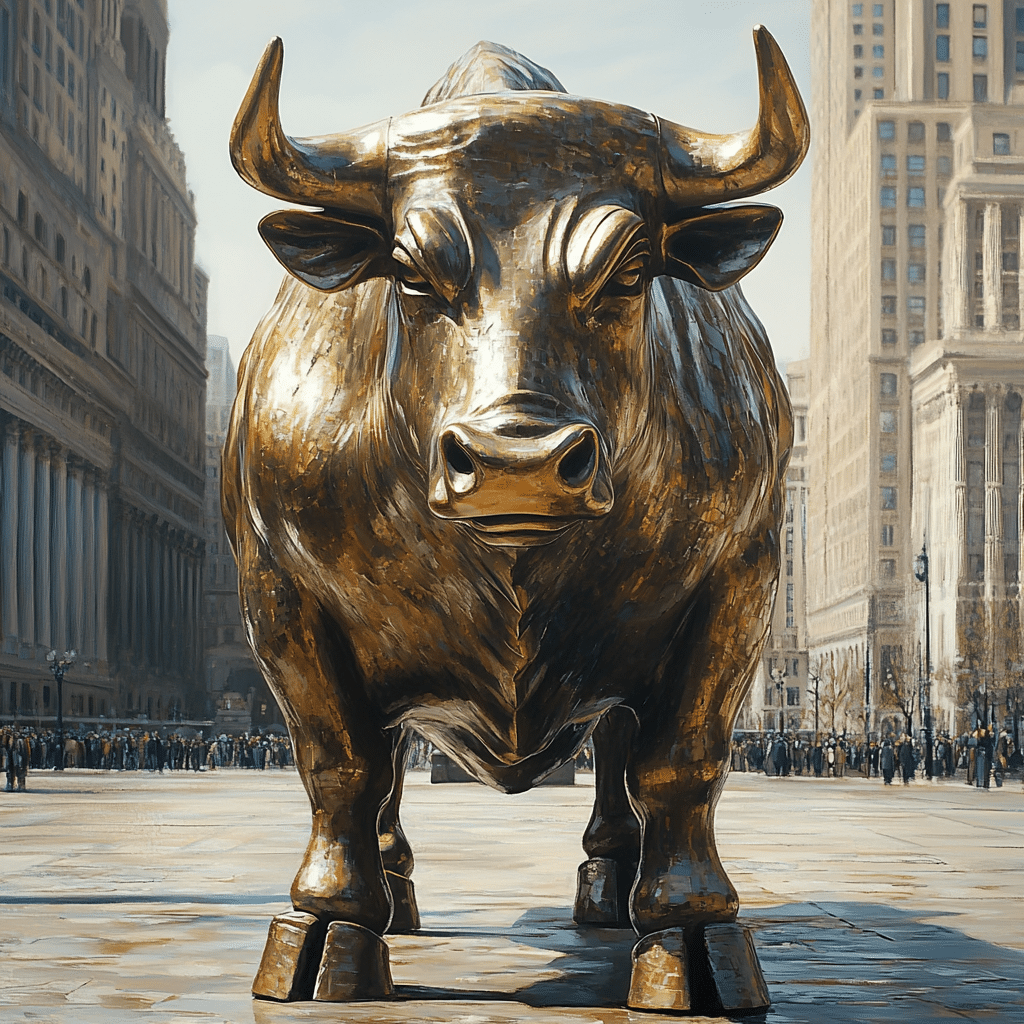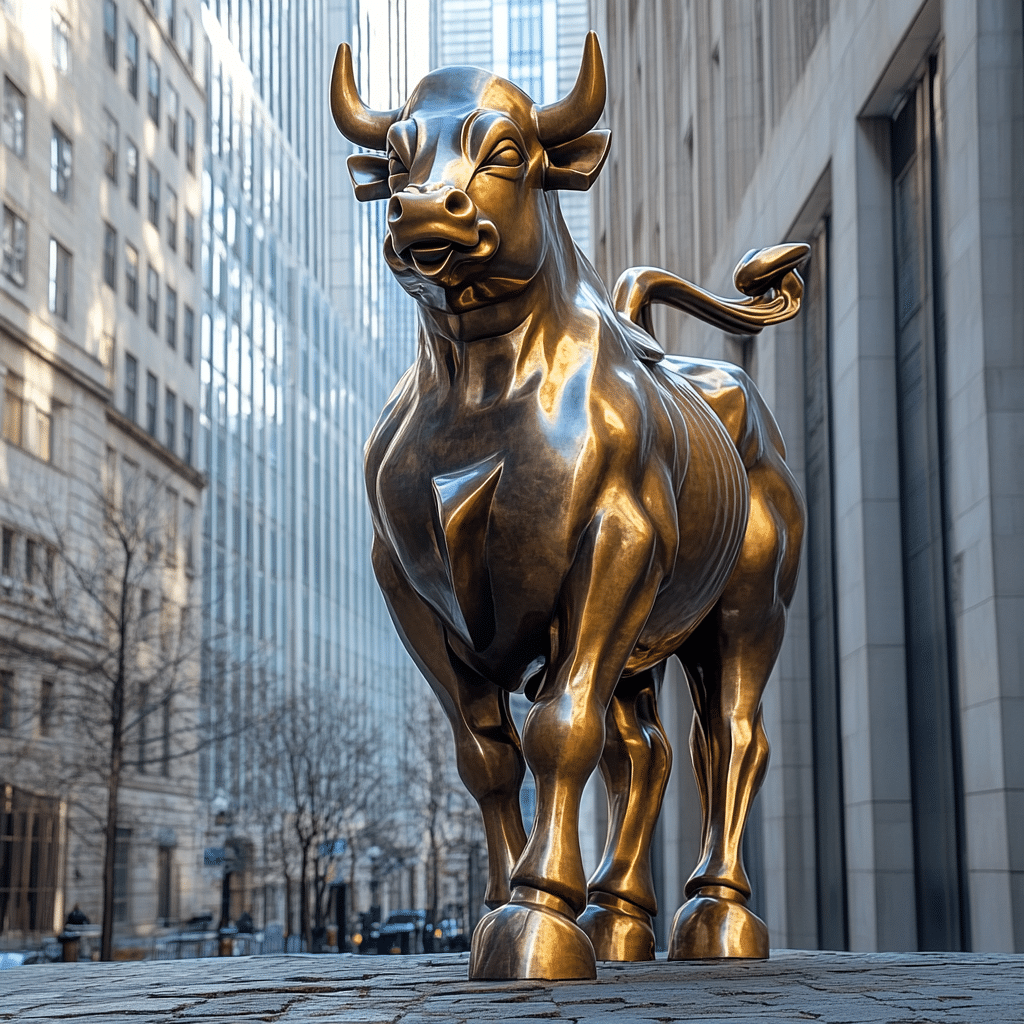The Toro de Wall Street, commonly known as the Wall Street Bull, stands as a powerful emblem of financial optimism in New York City. This monumental bronze sculpture, created by artist Arturo Di Modica in 1989, exudes resilience and hope, particularly following the tumultuous stock market crash of 1987. The bull not only embodies the strength of the American investor but also has become a cherished icon in the financial world, drawing millions of tourists to the Financial District each year. Understanding its history, impact on culture, and enduring legacy reveals why the Toro de Wall Street remains a beacon of positivity in the often unpredictable landscape of finance.
The History and Significance of the Toro de Wall Street
Arturo Di Modica spent two years meticulously crafting the Toro de Wall Street, which weighs around 7,100 pounds, stands at 11 feet tall, and stretches 16 feet long. It was originally positioned outside the New York Stock Exchange as a symbol of strength and recovery, a rallying cry for investors to regain confidence after the significant losses of the late 1980s. Di Modica intended for the sculpture to motivate the American public and demonstrate the power of resilience, stating it was a way “to encourage everybody to realize America’s power.”
The bull’s debut was not without controversy, as it was placed without permission. However, the public quickly embraced the Toro de Wall Street, leading to its official installation. Over time, it has cemented itself as an icon of the financial industry, representing not just the bullish market—but also the spirit of perseverance that characterizes the economy.
Today, the Toro de Wall Street has transcended its artistic roots. It has sparked a touristic phenomenon, becoming a must-see for visitors from all walks of life. Whether it’s tourists snapping selfies or Wall Street brokers pausing for a moment of reflection, the bull stands as an enduring emblem of hope and ambition.

The Toro de Wall Street and Its Cultural Impact
A. The Bull’s Role in Media and Pop Culture
The Toro de Wall Street has seeped into popular culture, often portrayed in films and television shows ranging from The Wolf of Wall Street to Billions. These depictions reinforce the bull’s symbolism of financial success and exuberance, often reflecting the highs and lows of the stock market in dramatic fashion.
Moreover, in many news stories and reports regarding economic fluctuations, the bull is frequently mentioned, creating an association of growth and optimism. This coverage plays a pivotal role in shaping public perception, influencing both seasoned investors and newcomers alike.
B. Art and the Financial Narrative
In addition to its cinematic presence, a range of artists and activists have engaged with the Toro de Wall Street in thought-provoking ways. One notable example is the installation of “Fearless Girl,” which originally faced the bull, symbolizing female empowerment and corporate ethics. With her recent relocation in August 2023 to stand defiantly in front of the New York Stock Exchange, the message strengthened—both sculptures now embody the ongoing conversation about gender equality in the financial sector.
New artistic interpretations continue to emerge, reaffirming the bull’s role as a cultural touchstone. These pieces explore varying themes, including capitalism’s ethics and responsibilities, spotlighting the need for accountability in a space often perceived as solely profit-driven.
Top 7 Ways Toro de Wall Street Captures Financial Optimism
Financial optimism transcends mere wealth; it involves confident beliefs about the future. Here are seven distinct ways the Toro de Wall Street encapsulates this spirit:

The Future of the Toro de Wall Street: Evolving with the Times
As both New York City and global markets march forward into uncharted territory, what’s next for the Toro de Wall Street? With the rise of financial technologies like cryptocurrency and decentralized finance, the traditional meanings associated with the bull may evolve. Investors’ shifting demographics also play a significant role in shaping the perception of this masterpiece.
Younger investors, influenced by technology and social media, might interact with the bull in new ways. They may see it as a connection to traditional finance while also understanding the need for progressive thought in today’s more complex financial landscapes.
The ongoing dialogue around the bull suggests that it will continue to adapt alongside these changes. The Toro de Wall Street isn’t just a statue; it’s a lasting part of a global narrative on finance, resilience, and optimism that seems unwavering in its significance.
The Toro de Wall Street: An Enduring Legacy
At the center of New York’s Financial District, the Toro de Wall Street stands tall—a resounding emblem of optimism and ambition. Its legacy stretches beyond mere economic figures; it embodies the enduring spirit of resilience found in the human experience. In a world rife with volatility, the bull serves as a constant reminder of the possibilities of hope and opportunity.
Every day, as new investors approach the bull hoping for success, it urges a collective faith in a brighter financial future. The mantra of bull markets resonates vividly, underscoring a belief in prosperity, tenacity, and financial growth. The Toro de Wall Street remains not only a physical landmark but also a symbol of the vibrant, ever-evolving story of human aspiration and resilience.
Toro de Wall Street: A Symbol of Financial Optimism
A Dash of History
Did you know that the toro de Wall Street, also known as the Charging Bull, was created by artist Arturo Di Modica in the winter of 1989? This impressive bronze sculpture was initially placed in front of the New York Stock Exchange as a symbol of economic resilience. Just a few blocks away, the iconic buildings of NYC, including some of the Biggest Houses in America, paint a picture of wealth and ambition. The bull has since become a symbol of optimism for investors and everyday people alike. Wouldn’t it be interesting if famed stars, like those from Lady Gaga Movies, visited its daunting presence, mingling their glamour with the world of finance?
Bullish Facts and Fun Tidbits
Here’s a quirky bit of trivia: the toro de Wall Street was not commissioned; it was installed without permission! Talk about a bold move! The bull has become a must-see for tourists and locals. After snapping a selfie, many wander nearby, catching glimpses of vibrant neighborhoods like Tremadog or even popping into cafes named after financial giants. Speaking of trajectory, many folks often wonder, How much can I get approved For a home loan Just like the surge of enthusiasm that surrounds the bull, owning a home in NYC certainly raises spirits.
Cultural Impact and Immediate Buzz
Much like the charming streets of Towyn, where community vibrancy thrives, Wall Street’s bull has inspired countless artists and even the internet’s artistic side, reminiscent of fan creations from sites like Imhentai full of various forms of creativity. In a city where everything evolves at lightning speed, this modem of finance continues to stand tall, even as new trends come and go. Whether you’re capturing the moment online or chilling with a cup of coffee, the toro de Wall Street remains a reminder that optimism indeed fuels our shared ambitions.

What does the Toro de Wall Street represent?
The Toro de Wall Street represents financial optimism and prosperity, symbolizing hope for a thriving economy, especially after tough economic times.
What is the story behind the bull on Wall Street?
The bull on Wall Street was created by sculptor Arturo Di Modica in response to the 1987 stock market crash. He spent two years crafting it to inspire a sense of recovery and strength in the American spirit.
What happened to the girl with the bull on Wall Street?
The Fearless Girl statue moved from Bowling Green Park to a new spot near the New York Stock Exchange, now standing boldly in front of a symbol of the financial world rather than facing the Charging Bull.
Why is there a bull statue instead of a bear statue?
A bull statue was chosen over a bear statue because the bull represents a rising market and positive economic outlook, which were needed after the stock market crash.
What is the symbolism behind Wall Street?
Wall Street symbolizes the heart of the American financial system, showcasing the hustle and bustle of commerce, trade, and investment.
What does the bull statue in New York represent?
The bull statue in New York stands for a thriving economy and investor confidence, especially in the context of stock market gains.
Can you touch the bull on Wall Street?
You can touch the bull on Wall Street, and it’s common for visitors to rub its nose for luck, even though it’s a cherished piece of public art.
What does the Fearless Girl statue represent?
The Fearless Girl statue represents female empowerment and leadership, encouraging women to take a stand in the business world and beyond.
What does the bear represent on Wall Street?
On Wall Street, a bear symbolizes a declining market, representing pessimism and a downturn in the economy.
Is the Little Girl statue still on Wall Street?
Yes, the Fearless Girl statue is still on Wall Street, standing proudly in front of the New York Stock Exchange as a symbol of strength.
Who is the woman statue in NYC 1915?
The woman statue in NYC from 1915 is known as “The Spirit of Womanhood,” which highlights feminine qualities and pride.
Where is the fearless girl right now?
The Fearless Girl is currently situated in front of the New York Stock Exchange, continuing her message of courage in the financial district.
What is the story behind the bull of Wall Street?
The bull of Wall Street was created as a response to economic struggles, aiming to uplift spirits and signify recovery in the stock market.
What does the bull symbolize in the stock market?
In the stock market, the bull symbolizes rising prices and market growth, embodying hope and a positive trajectory for investors.
Does the Wall Street Bull have a name?
The Wall Street Bull is often simply called “Charging Bull,” a name that reflects its dynamic posture and the message it conveys.
What is the message of Wall Street?
The message of Wall Street revolves around the idea of economic opportunity, investment potential, and the importance of perseverance in financial markets.
What does this is Wall Street mean?
“This is Wall Street” usually implies a reference to the significance and impact of the financial district, highlighting its role as a global economic center.
What is significant about Wall Street?
Wall Street is significant as it’s the financial hub of the U.S., with major stock exchanges and institutions that influence the global economy.
What animal represents Wall Street?
The bull is the animal that represents Wall Street, symbolizing vigor and a thriving economy, countering the bear’s more negative connotations.



